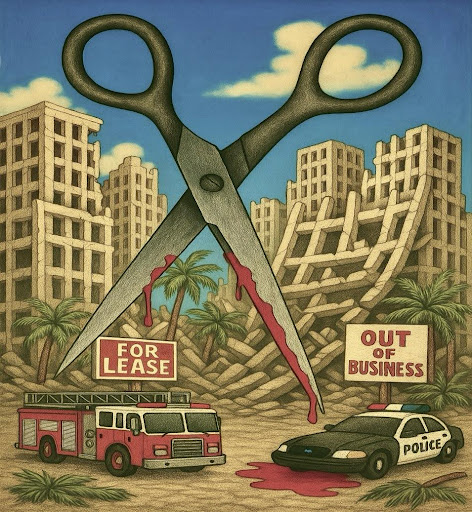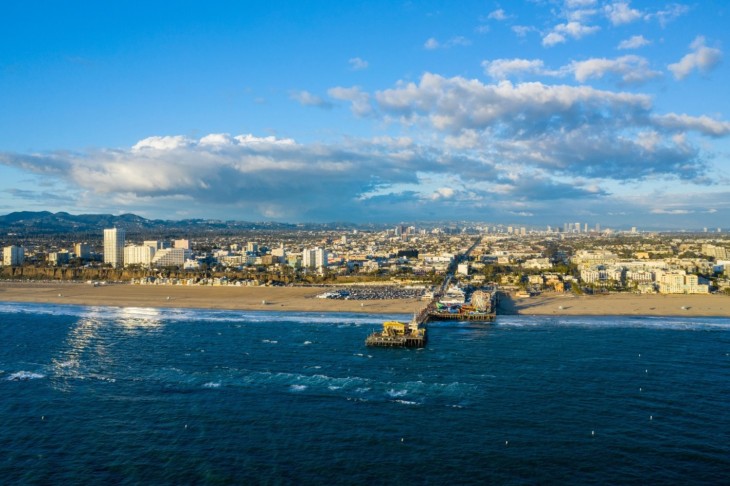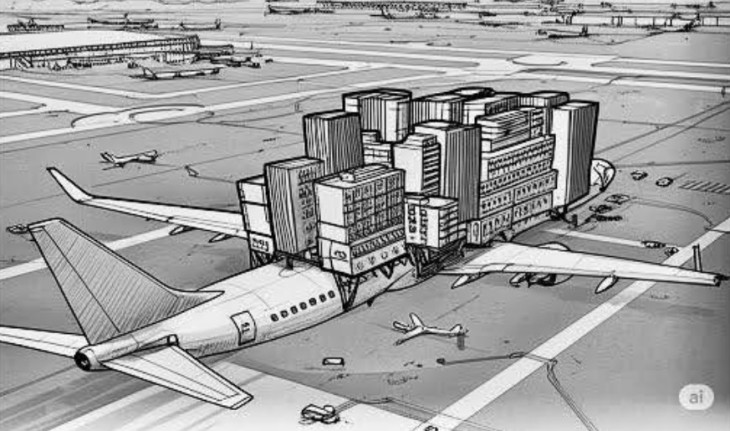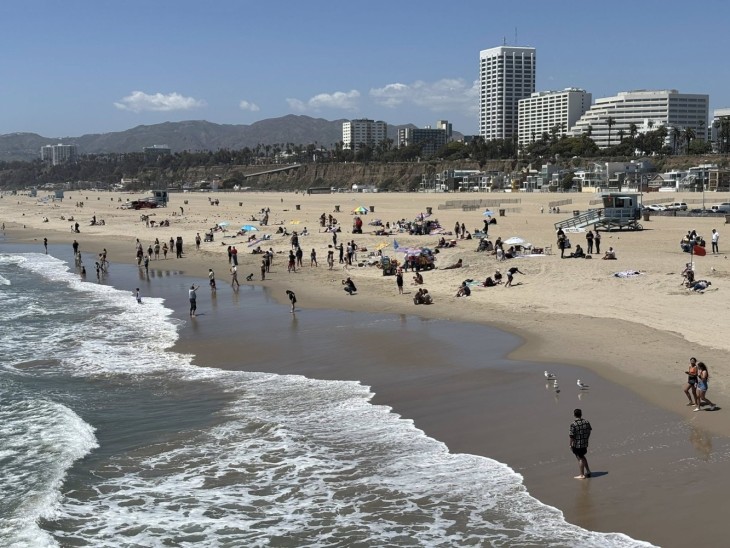Dear Editor,
Every resident in our city has experienced frustration with some aspect or another of the city’s policies. Wonderful as it is, our city can improve in many different ways. What is needed is a common-sense approach, based on solving real-world problems. Some of these are physical and space-related issues. Others are related to the way projects are approved and built. Here are a few items we feel are important.
Density, Traffic and Services
Issues:
• Santa Monica’s daytime density is comparable to that of Athens or Barcelona. City policies are increasing the density of the city, and will continue to erode our quality of life unless they are changed.
• Trains will cross the three major north/south streets at 4 to 6 minute intervals in each direction, increasing traffic gridlock unless coordinated with a timed traffic-light system.
• Getting to the train stations will be a challenge: no apparent plans for a DASH system, and/or electric jitneys, to cover the first/last mile problem.
• Getting there by car will be a problem: no parking at the 4th St and Bergamot Expo Stations, and only 77 spaces at the 17th St. Station. Pick up/drop off congestion at stations guaranteed.
• No guard gates appear to be planned at on-grade rail crossings. This is an invitation for accidents.
• Light rail will create more challenges to the delivery of timely emergency services because the system will separate portions of the city. The city’s emergency service providers appear to be understaffed to deal with this problem.
Common Sense:
• Provide an in-city network of public transportation to get people to the train stations–soon.
• Provide parking at the train stations for those who cannot use public transportation to get there.
• Install guard gates at on-grade crossings to help reduce accidents.
• Fully staff the police and fire departments to provide timely service in all parts of town regardless of traffic conditions.
• Fully coordinate traffic light timing and train schedules to minimize disruption to pedestrian, bicycle and motorized vehicles.
Development Decisions
Issues:
• Community benefits provided by developers are insufficient to justify the burden imposed by excessive development. Too much slack provided by the city to developers in many development matters.
Examples:
• Hines saved $35 million by eliminating 650 cars from their parking garage. It would have taken 60 years before proposed community benefits would have matched their savings!
• Hines could have built 33% of the project, the most profitable office building and traffic generator in the complex, with no obligation to build any housing at all for ten years.
• Hines would have provided 492 housing units- 2 units below the number required to provide proof of an available water source… a coincidence?
• The city has allowed downtown developers to build apartment buildings without individual water meters, contrary to the building code, to save developers money at the community’s expense, during a time of drought.
• The city continues to allow large projects to proceed, even in the face of an extended drought. These approvals will vitiate the city’s efforts to become water-independent by 2020, and may increase water rates for residents and businesses.
Common Sense:
• The City needs to negotiate agreements where the benefits to the City match or exceed the savings to developers.
• The City must receive ironclad guarantees that “future promises” are kept, and in a timely manner–not a decade or two away.
• The City must prevent indirect costs, such as infrastructure upgrades, from being passed onto residents.
• The City must enforce both the building and zoning codes, especially for the largest developers.
• The City must restrict the construction of large projects unless they can demonstrate an independent water supply that will not impact water availability elsewhere in the city.
Running the City
Issues:
• Excessively burdensome building approval process imposes unreasonable delays. Example: although approval is required from several departments, no department can approve individually until all have completed their process. This means lengthy waits until all issues have been addressed.
• City projects lack common-sense benefits to the public. Example: the bus shelter redesign has provided uncomfortable bus benches, little shade and insufficient bus information.
• City projects impose burdens on everyday tasks. Example: parking at the Ken Edwards Center is difficult to operate, especially for seniors. Another example: Parking structure signs at city-owned lots obstruct view of oncoming traffic.
• City duplicates work done with expensive outside consultants. The Fifth/Arizona project, for example, had six planning staff helping develop the project proposal, in addition to staff employed by the developer.
• The city pays excessively high salaries in relation to its size and that of comparable cities. Our city employs 62 people earning over $300,000 a year, not including their 80% pension. Pasadena – with a larger population – has one person earning over that amount.
Common Sense:
• Streamline the building approval process and impose consistent rules applicable to all, both in building and zoning. This provides certainty to developers and assurance to citizens that rules are followed as intended.
• Use a common-sense approach to city projects. It doesn’t take a surgeon to understand that a bus stop needs seats with arms and backs.
• Make sure that everyday projects such as parking signs and gates work for people in a practical way. Bring in members of the public to test prototypes and see if they actually function as intended.
• Control the use of outside consultants (who often promote their projects despite community concerns). Don’t duplicate the work of developers. Do more work in-house without referring to expensive consultants wherever possible. The city already employs many talented, well paid people who are qualified to perform most city functions.
• Control and limit the top salaries of city employees to align with the city’s size and goals, and comparably with other cities of similar size and circumstance.
We want the city to start using common sense in its operations, expenditures, transportation policies and finances. Santa Monica needs a Department of Common Sense.
Sincerely,
Mario Fonda-Bonardi AIA, architect, Ron Goldman AIA, architect, Daniel Jansenson, Architect, Armen Melkonians, Civil Engineer, Thane Roberts AIA, architect, Robert H. Taylor AIA, architect, Samuel Tolkin AIA, Architect.






















